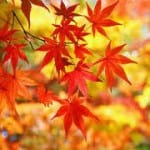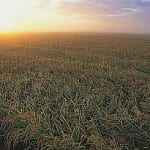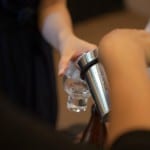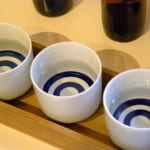 …and its lack of legal standing
…and its lack of legal standing
Like almost anything consumable in Japan, sake has its seasons. Examples include warm sake in the winter, nama (unpasteurized) sake in the spring, slightly toned down chilled ginjo in the summer.
And overall, perhaps the best season for sake is the fall. Like, now. Just about everything seems to taste better in the autumn, especially in Japan. I dunno… maybe it is the mercifully cooling temperatures and dryer air, or perhaps it is the yellows, oranges and browns of the foliage. It may even be that so many varieties of fish express fuller and richer flavors once the fall sets in. Whatever the combination of factors may be, it is surely a great season for enjoying sake. In fact, it is one of the top four, methinks.
There is a special type of sake called hiya-oroshi that is released in the fall that has an irresistible charm to it. The word hiya-oroshi has its origins back in the Edo period (1604 to 1868). Back then, finished sake was stored in the large wooden tanks used for brewing. Normally, this sake had been pasteurized once (by heating it for a short time) before being put in these tanks for maturation. If the brewer needed to ship some out, they would have to pasteurize the sake a second time before putting it into small wooden casks – called taru – for delivery.
This is because the outdoor temperature was still high in the summer, which would allow the sake to  become warm enough where dormant enzymes and the lactic bacteria that fed on them could both become active, potentially sending the sake awry. A second pasteurization permanently deactivates these enzymes and “dispatched” any bacteria present, removing that fear, but taking at least a bit of the zing of the sake along with it.
become warm enough where dormant enzymes and the lactic bacteria that fed on them could both become active, potentially sending the sake awry. A second pasteurization permanently deactivates these enzymes and “dispatched” any bacteria present, removing that fear, but taking at least a bit of the zing of the sake along with it.
However, once it became cool enough in autumn, brewers could fill their taru from the storage tank without pasteurizing the sake, and ship it with no fear of it going bad. The lower temperatures of autumn ensured nothing bad would happen. Such sake – sold in the fall without pasteurizing a second time before shipping – came to be known as hiya-oroshi.
Hiya means cold, and oroshi means to lower something; in this case, sake was lowered from the tank into the taru.
Note that hiya-oroshi is technically the same thing as nama-tzume, i.e. the second of normally-two pasteurizations is foregone. But nama-tzume is a purely technical term whereas hiya-oroshi has a seasonal implication, i.e. it is only released in the fall.
The problem is, though, that the term hiya-oroshi is not a legal definition and is therefore open to variation from brewer to brewer. In other words, it’s the usual fun-and-games of the sake world: a term on a label means a particular thing – unless it doesn’t.
And, also typical of the sake world, the industry maintains the spirit of it all – what is important is intact, even if the details vary a bit. Almost always, hiya-oroshi will be slightly young and vibrant. That much is consistent from brewer to brewer.
But lately there has been a spate of totally unpasteurized hiya-oroshi out there. So while usually, by definition, the second of the two pasteurizations was skipped, some brewers skip both and ship hiya-oroshi as totally nama. And, in fact, I have even encountered some twice-pasteurized hiya-oroshi out there as well. Huh?
Why? Because they feel it suits their style better. How can they get away with this? Because hiya-oroshi is not a legal definition. In the words of Barbosa from Pirates of the Caribbean, “They’re more what you’d call guidelines than actual rules.”
 Hiya-oroshi – whether pasteurized just once as is traditional or not – often has a bit more of a fresh, lively taste to it than other sake. While not as brash as freshly pressed sake, there can be a slightly youthful edge to it because it has not been laid down as long as most sake has. Naturally, this varies greatly from sake to sake, and from kura to kura.
Hiya-oroshi – whether pasteurized just once as is traditional or not – often has a bit more of a fresh, lively taste to it than other sake. While not as brash as freshly pressed sake, there can be a slightly youthful edge to it because it has not been laid down as long as most sake has. Naturally, this varies greatly from sake to sake, and from kura to kura.
Furthermore, there has been a half-baked movement over the last decade or so to release all hiya-oroshi on September 9, a day known as sekku, recognized as a turning point in the seasons. But even amongst the regions that push this, no one has gotten everyone to agree to do that. As such, the dates on which it is released vary greatly as well. No matter. It is always about early September, and spreading it across a few days helps keep the hype restrained.
While mostly a local, fresh product that is widely available in Japan for a short period of time, some of it does get out to other places in the world as well. Look for it at a reputable sake shop near you.
~~~~~~~~~~~~~~~~~~~~
Sake Professional Course in New York City, December 7-9
 The next Sake Professional Course is scheduled for New York City, December 7 to 9, 2015. The venue is smaller this time and participation is limited to 40 people. It is just about half full, or half empty, depending on your perpsective.
The next Sake Professional Course is scheduled for New York City, December 7 to 9, 2015. The venue is smaller this time and participation is limited to 40 people. It is just about half full, or half empty, depending on your perpsective.
More information is available here, and testimonials from graduates can be perused here as well. The three-day course wraps  up with Sake Education Council supported testing for the Certified Sake Professional (CSP) certification. If you are interested in making a reservation, or if you have any questions not answered via the link above, by all means please feel free to contact me.
up with Sake Education Council supported testing for the Certified Sake Professional (CSP) certification. If you are interested in making a reservation, or if you have any questions not answered via the link above, by all means please feel free to contact me.
Following that, the next one is tentatively scheduled for Japan in January, and then the spring in Chicago. If you are interested, feel free to send me an email to that purport now; I will keep track of your interest!




